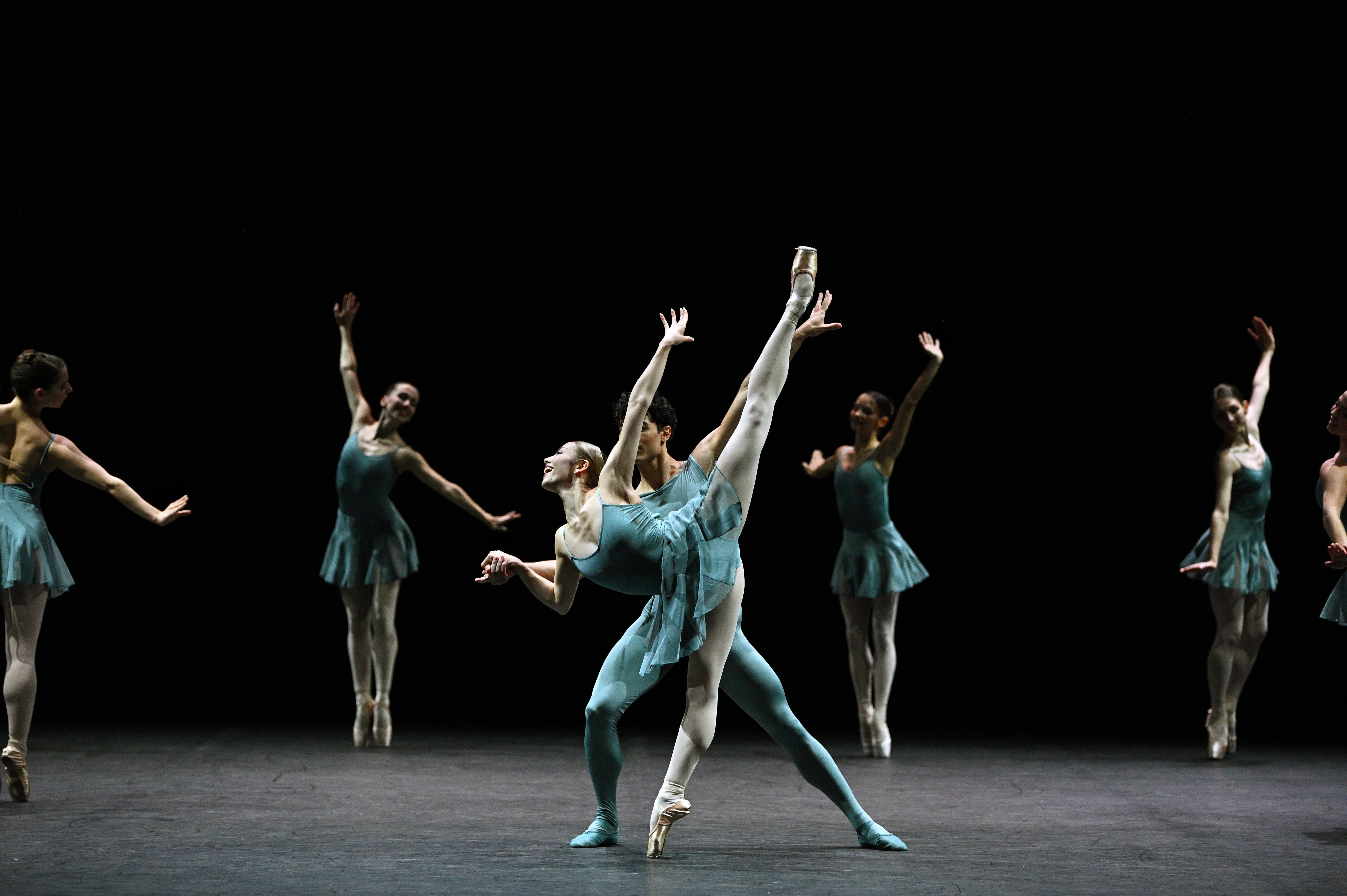English National Ballet review: Triple bill is a confident and smart statement of identity
Dance is bright and bold, but Mats Ek’s new version of ‘The Rite of Spring’ lacks emotion and surprise

English National Ballet’s new programme shows a company light on its feet, at ease with itself and ready to experiment. As a statement of identity, it’s confident, smart, and very well danced.
Under director Tamara Rojo, ENB has punched above its weight in working with international choreographers. This triple bill offers a new Rite of Spring from big European name Mats Ek, a revival that builds on ENB’s relationship with star choreographer William Forsythe, and a work by homegrown choreographer Stina Quagebeur. Rojo is leaving to direct San Francisco Ballet; Aaron Watkin, her successor, will inherit a company on a roll.
Ek is known for his reworkings of classics: Giselle in a psychiatric hospital, Carmen with cartoonish energy. For The Rite of Spring, he frames the sacrifice as a wedding: a daughter to be married off under patriarchy. The parents, danced by Erina Takahashi and James Streeter, prepare Emily Suzuki for her marriage, draping her in white. Streeter holds Suzuki aloft, completely enveloped in her wedding clothes: she’s become a symbol rather than a person.
Ek’s point is clear but unsurprising: his Rite lacks the pity and terror of Pina Bausch’s version, also danced by this company. But there are sharp moments of insight. A group of women, dressed in stiff pink by Marie-Louise Ekman, urge Suzuki to her fate. They take their robes off, whacking the floor around her feet in an image of just-displaced violence. It’s both a shock and unsurprising that her mother leads the attack, women enforcing a system that represses them.
The company dancing is bright and bold. Fernando Carratalá Coloma makes a jittery bridegroom, feet pattering swiftly as he finds moments of shaky connection with Suzuki’s bride. Gavin Sutherland conducts a forthright account of Stravinsky’s monumental score.
Forsythe’s Blake Works I sets classical steps to music by singer-songwriter James Blake, and makes the combination irresistible. The cast of 22 stand poised, then swing their hips like dancers in a club – but most of the time, Forsythe shows pop and ballet speaking a shared language, virtuoso steps finding the sparkle in Blake’s rhythms.

Emily Suzuki and Junor Souza flow into parallel shapes, but stay just separate even when they reach for each other. Emma Hawes and Aitor Arrieta dance with serene authority in the final duet. Throughout, the dancers enjoy Forsythe’s contrasts: fizzing speed, sculptural changes of direction.
Quagebeur’s Take Five Blues started as a digital dance, created during lockdown. Danced to Nigel Kennedy’s recording of jazz standards and Bach, it’s a friendly piece that celebrates connection. Dancers dip in and out, smooth and jaunty. Even in solos, there’s a sense of camaraderie uniting them.
Until 12 November www.sadlerswells.com
Join our commenting forum
Join thought-provoking conversations, follow other Independent readers and see their replies
Comments


Bookmark popover
Removed from bookmarks